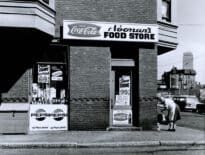
Malia Lazu
When I first went to the Massachusetts Institute of Technology as a Mel King Fellow in 2011, I became part of the Community Innovators Lab in the Department of Urban Studies and Planning. Soon after I became active with the lab, I began to appreciate just how much power urban planning has. And I saw more closely how the failures of urban planning reveal some of the ugliest parts of human nature and the deficits of our capitalist system – namely, racism and classism.
A case study frequently used in urban planning is Boston’s own urban renewal program in the West End. In the 1950s, the Boston Housing Authority launched a redevelopment of the West End, home to working-class people and immigrants. To justify their action, the city administration at the time conducted studies on the quality of life in the neighborhood, which found about two-thirds of the units were, it claimed, “substandard.” Boston decided to raze the entire neighborhood. As a result, thousands of families were displaced – some into homeless shelters.
Working with Mel King and other elders in community activism, I met people who remember being displaced, some children then never recovered physically or emotionally. Even today, just say the words “West End redevelopment” and emotions get triggered.
Boston’s urban planning has a long history of being sordid and divisive. Within that system, Boston developers have made a lot of money. Bravo to them, but things need to change for our city to realize its full potential.
The problem is Boston’s planning lacks innovation, imagination and equity. Hopefully, as the Boston Planning & Development Agency evolves we will see a more modern take on urban planning. For this to happen, though, we need an inspired and forward-looking vision for urban planning.
Path to a Better City
In his newly published book, “A History of Boston,” longtime Boston real estate attorney Dan Dain lays out a blueprint for the city’s future. His book takes the reader on a journey through Boston’s history, from its origins to the election of the first woman mayor of color. Against this backdrop, Dain outlines the importance of density, diversity and good design – his three Ds – in building a thriving city and culture. Think Jane Jacobs and her “The Death and Life of Great American Cities” – but, this time, for the 21st century.
Dain writes, “Boston has tried many ways over the centuries, some successful and others less so. When Boston has failed (when it has rejected density, diversity, and good urban design), the costs have included economic losses, social isolation, obesity, carbon output, ugliness, inequality, and loss of open space, farms, and natural habitat. When Boston has succeeded (by embracing the tenants of good urbanism), the byproducts have been benefits to people economically, physically, mentally, and socially. “
As Boston continues to struggle with the class and race tensions in the city, “A History of Boston” is a must-read for developers, planners, municipal leaders, students or anyone else interested in how vibrant and sustainable cities come to be.
A Call to Imagine
Dain has a long tenure in real estate, having co-founded what is today Dain, Torpy, Le Ray, Wiest & Garner, PC, the premier boutique law firm for the commercial real estate industry in Massachusetts. He also supports building Boston culture through its restaurants and nightlife, such as by investing in restaurants like Mida.
In his book, Dain asks us to get imaginative, innovate and get over the past by learning from it. As seen through Dain’s three Ds, we see the value of each neighborhood and its people – especially in places like Roxbury.
Dain goes beyond the West End story and tells the fight against displacement in the South End and lower Roxbury. This discussion of the pushback against the Boston Redevelopment Authority, as the BPDA was formerly known, lays out lessons for a current generation of BPDA leaders to think about in how to repair the destruction caused by past urban planning, which prioritized developer profits and neighborhood segregation instead of preserving and protecting the current homes of working-class Bostonians.
As Dain explains, “The South End organized against the plans. United South End Settlements helped form neighborhood groups, which collectively came together into a new South End Urban Renewal Planning Committee (SEURC) intended to provide feedback on the BRA’s plans. SEURC rejected all three BRA sketch plans. In 1964, the BRA tried again, eliminating the green belt and scattering the proposed public housing in response to the feedback, but the plan still called for demolishing over 5,000 units of housing.”
Boston and its development community cannot afford to repeat these and similar sins of the past. The only way forward is to learn from them.
That’s what makes Dain’s book so impactful. It allows readers to understand why so much anger, frustration and distrust exists within the city’s communities and why only certain neighborhoods have been able to thrive with empathy and solutions. Boston’s future as a global city is not secured. Learning from our past and leaning into our strengths are the ways forward. Dain now gives us a model to use.
Malia Lazu is a lecturer in the Technological Innovation, Entrepreneurship and Strategic Management Group at the MIT Sloan School of Management, CEO of The Lazu Group and former Eastern Massachusetts regional president and chief experience and culture officer at Berkshire Bank.





